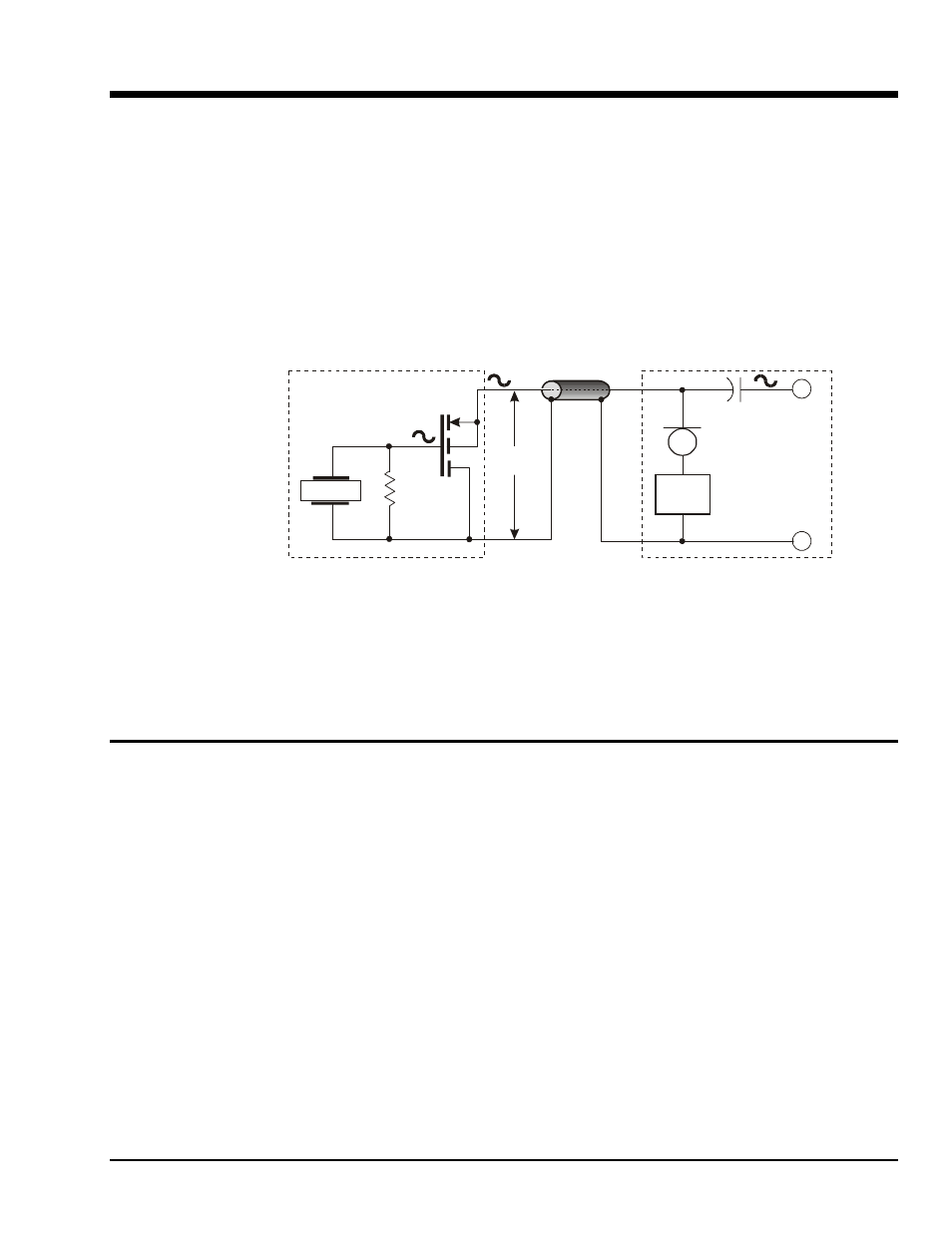Appendix a – using accelerometers, Overview, Accelerometer specification parameters – Measurement Computing WavePort rev.3.0 User Manual
Page 131: Noise in accelerometers, Sensitivity, Appendix a – using accelerometers a

Appendix A, Using Accelerometers
04-06-00
A-1
Appendix A – Using Accelerometers
A
Overview
A low-impedance piezoelectric accelerometer consists of a piezoelectric crystal and an electronic amplifier.
When stretched or compressed, the two crystal surfaces develop a charge variation that is related to the
amount of stress, shock, or vibration on the crystal. The amplifier outputs a corresponding signal and
transforms the sensor’s high impedance to a lower output impedance of a few hundred ohms. Note that, in
addition to acceleration, these sensors can also measure pressure and force.
The circuit requires only two wires (coax or twisted pair) to transmit both power and signal. At low
impedance, the system is insensitive to external or “triboelectric” cable noise. Cable length does not affect
sensitivity.
The figure shows a simple sensor-WBK14 connection. The voltage developed across R is applied to the
gate of the MOSFET. The MOSFET is powered from a constant current source of 2 or 4 mA and 27 volts.
Crystal
MOSFET
Sensor
Sensor to WBK14
Coaxial Cable
C
30 VDC
Power
R
GND
Amplifier
Input
Bias
Voltage
WBK14
-
+
Constant
Current
(2 or 4 mA)
Accelerometer Circuit
The MOSFET circuit will bias off at approximately 12 V in the quiet state. As the system is excited,
voltage is developed across the crystal and applied to the gate of the MOSFET. This voltage will cause
linear variation in the impedance of the MOSFET and a proportional change in bias voltage. This voltage
change will be coupled to the WBK14 input amplifier through the capacitor C. The value of R and the
internal capacitance of the piezoelectric crystal control the low frequency corner. Units weighing only a
few grams can provide high level outputs up to 1 V/g with response to frequencies below 1 Hz.
Accelerometer Specification Parameters
Noise in Accelerometers
The noise floor or resolution specifies lowest discernible amplitude (minimum “g”) that can be measured.
There are two main sources of noise as follows:
• Noise from the crystal and microcircuit inside the accelerometer. Some types of crystals, such as
quartz, are inherently more noisy than others. A good noise floor is 10 to 20 µV.
• Noise from electrical activity on the mounting surface. Since the signal from the accelerometer is a
voltage, 60 Hz or other voltages (ground loop, etc) can interfere with the signal. The best protection is
to electrically isolate the accelerometer.
Sensitivity
The sensitivity of an accelerometer is defined as its output voltage per unit input of motion. The unit of
motion used is “g.” One “g” is equal to the gravitational acceleration at the Earth’s surface, which is 32.2
ft/(sec)(sec) or 981 cm/(sec)(sec). The output is usually specified in millivolts per “g” (mV/g).
Sensitivity is usually specified under defined conditions such as frequency, testing levels, and temperature.
An example: 100 mV/g at a frequency of 100 Hz, level +1 g, at 72°F. Note that, although a sensor may
have a “typical” sensitivity of 100 mV/g, its actual sensitivity could range from 95 to 105 mV/g (when
checked under stated conditions). Manufacturers usually provide sensor calibration values.
